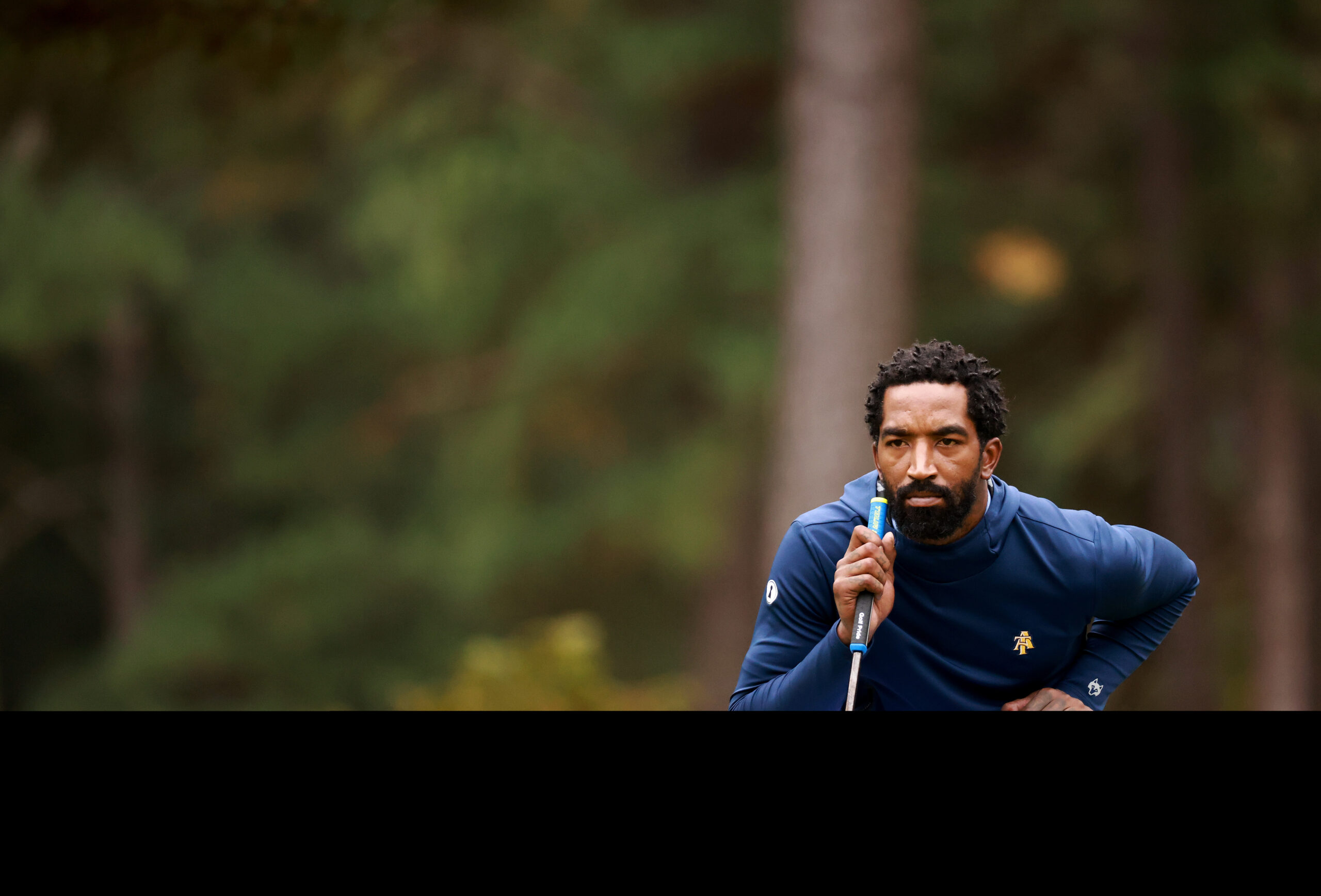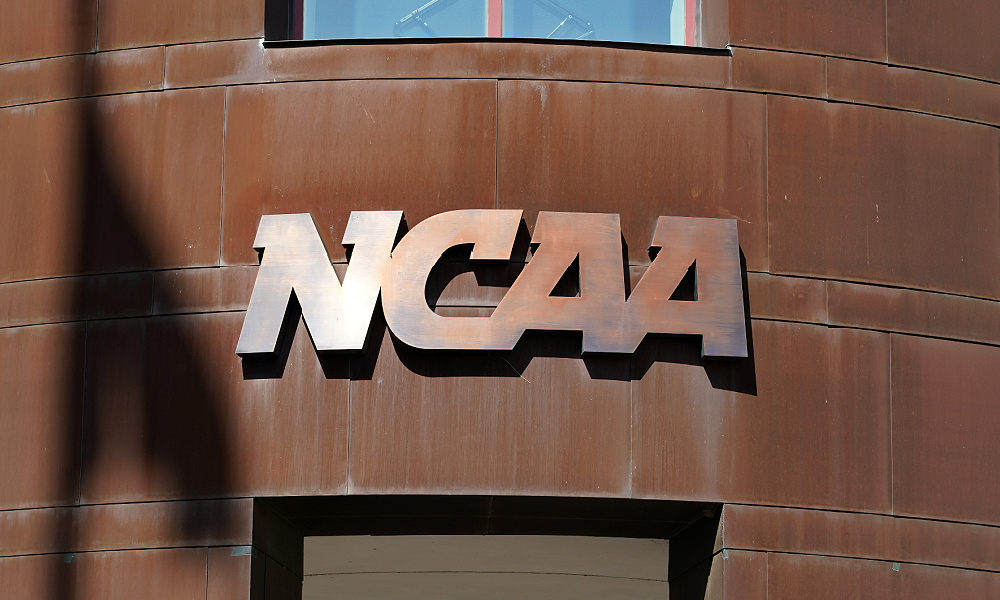Breaking with a long-held stance on athlete compensation, the NCAA Division I schools’ top rules-making group Wednesday approved policy changes that will greatly enhance athletes’ ability to make money from their name, image and likeness, beginning Thursday.
The decision announced by the NCAA came hours before laws or executive orders in more than a dozen states that will have the same impact were set to take effect.
The setup will remain in place until federal legislation or new NCAA rules are adopted.
“With the variety of state laws adopted across the country, we will continue to work with Congress to develop a solution that will provide clarity on a national level,” NCAA President Mark Emmert said in a statement. “The current environment — both legal and legislative — prevents us from providing a more permanent solution and the level of detail student-athletes deserve.”
Now, the NCAA stands on the edge of the most fundamental change to the college sports landscape since Title IX, the gender-equity law that was implemented nearly 50 years ago.
Under the new arrangement, college athletes will be allowed to engage in activities, including endorsement deals, leveraging social media for pay, and getting compensated for coaching, making personal appearances and signing autographs.
They will be able to do all of this in an environment that, at least for now, will have far fewer fixed boundaries than the schools had anticipated would be in place in the wake of a vote on a detailed set of rules changes that had been set for January.
Schools in states with laws about athletes’ name, image and likeness (NIL) activity “are responsible for determining whether those activities are consistent with state law,” the association said.
Schools in states without NIL laws will be able to develop their own policies, with the NCAA saying only that the association will be maintaining its “prohibitions on pay-for-play and improper recruiting inducements.”
A question-and-answer document addressed the specific issue of whether schools can arrange NIL opportunities for athletes by saying: “During the interim NIL policy, the expectation is that schools and student-athletes will not use NIL transactions to compensate for athletic participation or achievement or as an improper inducement.”
“It puts a lot of burden on schools on how to proceed,” said Tom McMillen, president and CEO of the LEAD1 Association, a group representing Football Bowl Subdivision athletics directors. “Schools could be very permissive, and it would help them in recruiting. That’s a possibility. I don’t know that there’s a downside to being permissive.”
Said Mid-American Conference commissioner Jon Steinbrecher: “I think the values of institutions will shine through. This is a good day. We’ve been talking for eons about modernizing our rules. This will be a dynamic process and we need a national solution.”
Wednesday’s decision is the culmination of a series of events over the past 12 years that have pressured NCAA schools into abandoning a standard of amateurism that they defended through legal battles that have cost the association and major conferences hundreds of millions of dollars in legal settlements and attorneys’ fees.
There have been a series of antitrust suits, starting in 2009, that built toward a unanimous Supreme Court ruling against the NCAA last week. And there have been state legislative changes on athletes’ behalf that began in California in 2019, and spread to a Florida law that established July 1, 2021 as an effective date other states have been racing to match.
The NCAA had been set to vote on detailed rules changes regarding NIL in January, but tabled the matter when the Supreme Court decided in December to hear the case on which it ruled last week and then, days before the scheduled vote, the Justice Department raised concerns about the plan.
Meanwhile, federal lawmakers began taking interest in the issue, introducing several bills that expired as the 2020 Congressional session wound down and Democrats regained control of the Senate.
In 2021, while the NCAA remained on hold, the number of states passing laws with a July 1 start date began rising rapidly. That prompted the association to step up efforts to seek federal legislation. However, five bills this year also have stalled as the NCAA has sought not only a federal legal standard on athletes’ NIL activity, but also protection from continued antitrust challenges. Democratic lawmakers have responded by demanding improvements from the schools in other benefits for athletes, such as health care and safety standards.
“Today’s decision from the NCAA is a welcome acknowledgment that college athletics must do more for college athletes,” Senate Commerce Committee Chair Maria Cantwell, D-Wash., said in a statement. “However, today’s interim action is no substitute for a national standard that not only gives our student athletes the ability to control their own name, image, and likeness rights, but also includes health care, safety, scholarship, and transfer protections.”
Blake Lawrence — the CEO of Opendorse, a sports technology company that works to help athletes build their endorsement value — said in an interview with USA TODAY Sports on Wednesday: “We are preparing for 100,000 student-athletes to register on our platform in the next 48 hours. There’s already 30,000 (registered) and we’re expecting to see 100,000-plus more.”
Ryan Detert, CEO of Influential, a firm that connects social media influencers with brands and works with a number of Fortune 500 companies, also predicted a sweeping and lucrative total marketplace over the remainder of this year.
“I would be very surprised if it’s not (a total in the) low tens of millions of dollars being put into the hands of both major-college athletes and nano-, micro-influencers that may not just be in the major sports like basketball, baseball, football — but (in) every possible sport. Lacrosse, women’s soccer, everything” Detert told USA TODAY Sports “… I know we’re going to do several million ourselves, just based on the current pipeline and interest. And it makes a lot of sense because we’re doing these Gen-Z and millennial campaigns with some of the biggest brands in the world.”
Asked about the types of activities and money that may be involved, Lawrence detailed a wide range of possibilities.
“It is clear that there are a handful of student-athletes on each team that are doing things like their own merchandise line, so using maybe a Shopify landing page to sell merchandise online, starting tomorrow,” Lawrence said. “Others that have a car dealership that’s already going to provide them a free car starting tomorrow. I mean, there is a lot of different things happening, that’s for sure. …
“I would say that these initial offers, there are some that are in the five figures, there are some in the four figures and others are more around the hundred-dollar range. I have yet to be made aware of anything that’s in the six-figure range, in terms of opportunities in the marketplace, but I’m sure there will be some at some level.”
Follow colleges reporter Steve Berkowitz on Twitter @ByBerkowitz









